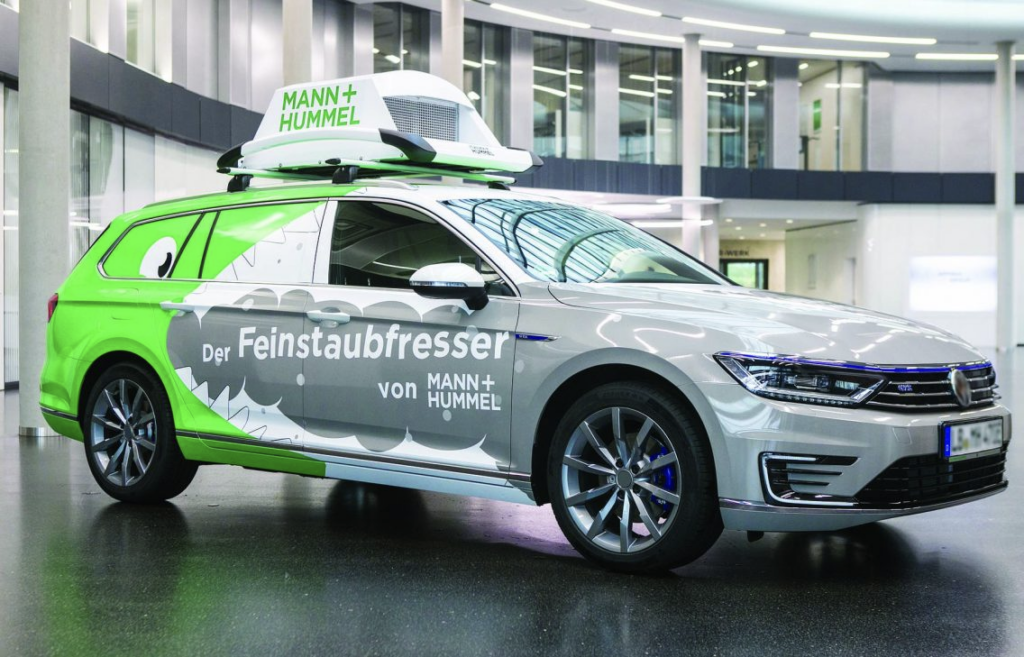Bosch takes part as a partner in the IoT-NGIN project. The first Industry 4.0 Living lab will validate the IoT-NGIN federation framework in real-life applications implemented at Bosch’s facilities in Aranjuez (Spain).
Bosch combines the Internet of Things with Artificial Intelligence, resulting AIoT. Bosch supports its business units in implementing digital business and scalable AIoT solutions – and in marketing and selling them successfully to their customers and partners.
Here you cand read more about a successful story of IoT implementation:
Mann+Hummel: IoT device management for filtersHow the filtration expert leverages the Bosch IoT Suite to optimize cleaning performance and increase efficiencies.
ProblemGlobal population growth shows no signs of slowing. More and more people are flocking to cities, driving demand for smart technologies to help keep their air and water clean.
SolutionAs part of its initiative championing smart cleaning technologies, Mann+Hummel collects and analyzes data from its filters. The company uses Bosch.IO device management software to this end.
BenefitMann+Hummel’s data analysis serves to fine-tune cleaning processes. It also raises flags, alerting the company to potential problems ahead. These early warnings help Mann+Hummel avert downtime.
Making cities more livable and sustainableThe world’s population is growing and becoming more urbanized. This makes building and maintaining liveable cities one of the most pressing technological challenges facing us. We need smarter approaches to everything we do, right down to managing the air we breathe and water we drink.
Of course, it’s not only that there are more of us, and we are all moving into cities. We also demand a certain quality of life. Governments are paying attention, enacting legislation to improve air and water quality.
The Asian region faces some of the biggest challenges in creating liveable and sustainable cities. Local organizations can create solutions that will appeal throughout the region. There’s also an opportunity to take it global.
MANN+HUMMEL is investing in new approaches to addressing these issues. Its Internet of Things (IoT) Lab in Singapore is part of an initiative for smarter cleaning technologies. Intelligent solutions use filters to collect data. This feeds analytics that help optimize cleaning performance and increase efficiencies. It also means reducing potential failures and resulting outages, as problems can be addressed before they happen.
Where to start?The IoT means creating a network of sensor-enabled devices to feed data to a cloud platform, where it accumulates for analysis. So, it’s crucial you can manage the connectivity and functionality of what may grow to billions of field devices.
Obviously, you need a robust remote device management at the core to enable IoT. Otherwise, you can’t operate at enterprise scale, with varying hardware configurations across multiple sites. You may also want to read my colleague this blog post which delves deeper into the reasons why device management is critical.
IoT device management is the first stepAsk MANN+HUMMEL. The field trials for its OurAir intelligent air solutions and associated roll-out will use 200 devices. But its solution is for industrial-grade IoT applications and it plans to add 20,000 devices a year. A variety of local sensors feed backend applications that collect the telemetry data, that is available using AWS cloud platform.
The main challenge in IoT deployments is the range of hardware and software components. Getting them to play well together is key. There’s no point creating a highly-connected network of smart devices if you need to manually manage each one. It’s time-consuming and potentially expensive. Consequently, MANN+HUMMEL turned to Bosch IoT Remote Manager to address this issue.

A cloud-based managed service, it takes the sting out of wrangling diversity and scale. Operators create logical groupings of devices based on business needs. From here they create rules and tasks to automate most operations.
The Bosch IoT Gateway Agent is a lightweight device management software residing within the edge device. It connects at intervals to the Bosch IoT Remote Manager to create a centralized user interface. It can remotely monitor the device fleet, create relevant groupings, adapt device configurations and push software updates. This provides comprehensive visibility, driving greater operational efficiencies. That’s on top of the actual time and cost savings from using a single point to manage its system
An elegant solution for IoT device managementClearly, leveraging an existing device management solution solves this issue. Implementation without changing existing software code minimizes disruption and frees MANN+HUMMEL to focus on further business application development.

Bosch IoT Suite and AWS technical solution architecture for IoT device management Source: Bosch Software Innovations
The cost of maintaining enough network bandwidth for millions of connected devices around the world can add up. But this project demonstrates another way. There’s no doubt that working with a partner who understands best practice allows you to optimize the device management connectivity layer.
For many businesses, the transition to an IoT ecosystem is a massive undertaking. It is especially important to pay equal attention to areas such as device management, sensor interoperability and operations. This will ensure a successful transformation. Consequently, if you get that under control, then IoT will be a breath of fresh air for you and your business.

